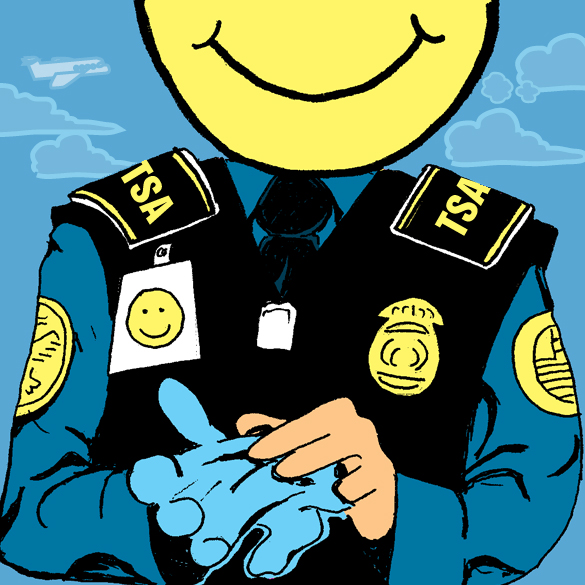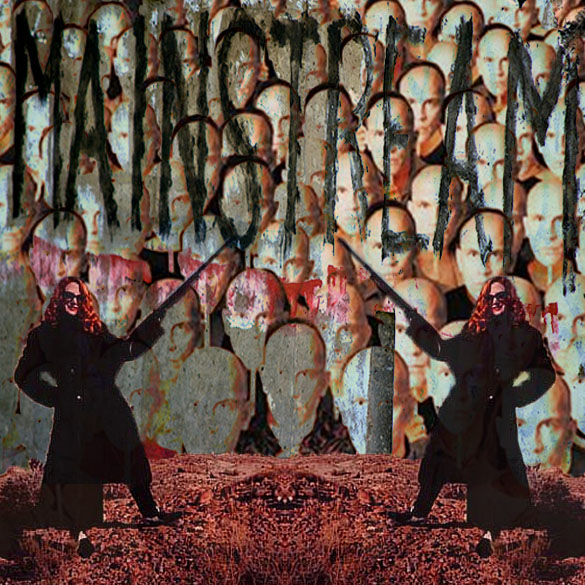“In a world gushing blood day and night, you never stop mopping up pain.” ― Aberjhani, The River of Winged Dreams
“Violence is as American as cherry pie.” ― H.R. Schiffman
The fact that 24-year-old neuroscience student James Holmes had the wherewithal to turn himself into a lethal killing machine is tragic but far from surprising. Frankly, I’m almost surprised it doesn’t happen more often, given that we’re not only raising young people on a diet of violence but indoctrinating them into a worldview that sees violence as a means to an end, whether it’s a SWAT team crashing through a door or the Avengers taking on invading alien armies. By the time a child reaches 18, it is estimated that he or she will have witnessed 200,000 acts of violence, including 40,000 murders on television.
Violence begets violence. Not only is violence contagious, however, but it’s imploding on America, a nation plagued by violence—in our homes, in our schools, on our streets and in our affairs of state, both foreign and domestic. Violence permeates our entertainment culture with its glamorization of death and destruction in reality TV shows such as Copsand Dog the Bounty Hunter, movies such as The Dark Knight Rises and the upcoming Gangster Squad (in which a gangster opens fire in a movie theater), and video games such as Soldier of Fortune.
Violence has become our government’s calling card, starting at the top and trickling down, from President Obama’s “kill list” to the more than 80,000 SWAT team raids carried out every year on unsuspecting Americans by heavily armed, black-garbed commandos. Our nation has one of the highest murder rates and levels of incarceration of all industrialized nations in the world. We even export violence, with one of this country’s most profitable exports being weapons. All too often, these same weapons fall into the hands of our enemies.
America is now seen as a violent empire with continual wars that stretch back to at least the beginning of the twentieth century. We send our young men and women off to fight these questionable wars in far-flung places, only to have them return broken, shell-shocked and battling bouts of violence, depression and suicide.
This brings us to the events of July 20, 2012, when a 24-year-old gunman, dressed as the Joker and wearing a gas mask and black SWAT gear, walked into a crowded Denver movie theater, set off two gas canisters and opened fire on the crowd assembled for the midnight showing of The Dark Knight Rises, leaving 12 dead and nearly 60 injured.
The media, true to form, is subjecting us to every grisly detail of the shootings. You can’t turn on the television without seeing this tragedy used as grist for prime-time ratings. In its feeding frenzy, the media has succeeded in glamorizing death and destruction to such an extent that shooting sprees have gained a notorious appeal–a way for people who, in life, may never have rated a second glance to attain celebrity status in death.
Yet even with the 24-hour coverage, we have more questions than answers, and speculation is rife. And the biggest question of all looms large: who or what is to blame?
Politicians want to blame the tragedy on easy access to guns. Their solution? Gun control and zero tolerance policies. But these are just cosmetic band-aids, doomed to failure, because if someone really wants to wreak havoc, they’ll find a way to obtain a weapon.
Sociologists want to blame it on the steady diet of violence that permeates everything in our culture. We have been caught in the grip of a cycle of violence that started with the government’s televised attack on a Waco compound in April 1993, in which 79 adults and children were killed. Two years later, to the day, the Oklahoma City bombing left 168 people dead. Four years after that, on April 20, 1999, two teenagers, Eric Harris and Dylan Klebold, opened fire on classmates and teachers at Columbine High School, killing 12 students and one teacher and leaving 24 others wounded.
Then, on April 16, 2007, we had the Virginia Tech massacre, in which 23-year-old Seung-Hui Cho walked into a university building on the Virginia Tech campus, chained the doors shut and opened fire on students and teachers alike, leaving 32 dead and many more injured before turning the gun on himself. Most recently, in February 2012, teenager T. J. Lane—reportedly a victim of bullying and something of a social outcast—walked into a Cleveland high school and opened fire in the cafeteria, killing two students and wounding three others.
The instinctive response to this latest Denver shooting spree will be to appease the public by adopting measures that provide the appearance of increased security. However, enacting tighter gun policies and increasing police surveillance and patrols will accomplish little more than propelling us the final step of the way into a police state.
It may be that Denver gunman James Holmes was simply a deeply disturbed individual, but we cannot ignore the fact that he was also a product of American culture. Thus, the question is not so much “Why is there a Holmes?” but “Why aren’t there more Holmeses, Chos, McVeighs and Klebolds?”
To borrow from Shakespeare, the fault is not in our stars but in ourselves. We are a society that is armed to the teeth. Our culture glorifies violence. Even security guards at shopping malls carry weapons. Our government is especially guilty of using violence as a quick fix. How can we teach nonviolence if our government leaders subscribe to violence?
In one of his classic essays, C.S. Lewis aptly described the absurdity of the mixed messages being sent to our young people. More than 60 years later, his words continue to resonate:
All the time–such is the tragi-comedy of our situation–we continue to clamour for those very qualities we are rendering impossible. You can hardly open a periodical without coming across the statement that what our civilization needs is more “drive”, or dynamism, or self-sacrifice, or “creativity”. In a sort of ghastly simplicity we remove the organ and demand the function. We make men without chests and expect of them virtue and enterprise. We laugh at honour and are shocked to find traitors in our midst. We castrate and bid the geldings be fruitful.



One thought on “Violence Begets Violence: Making Sense of the Dark Knight Massacre”